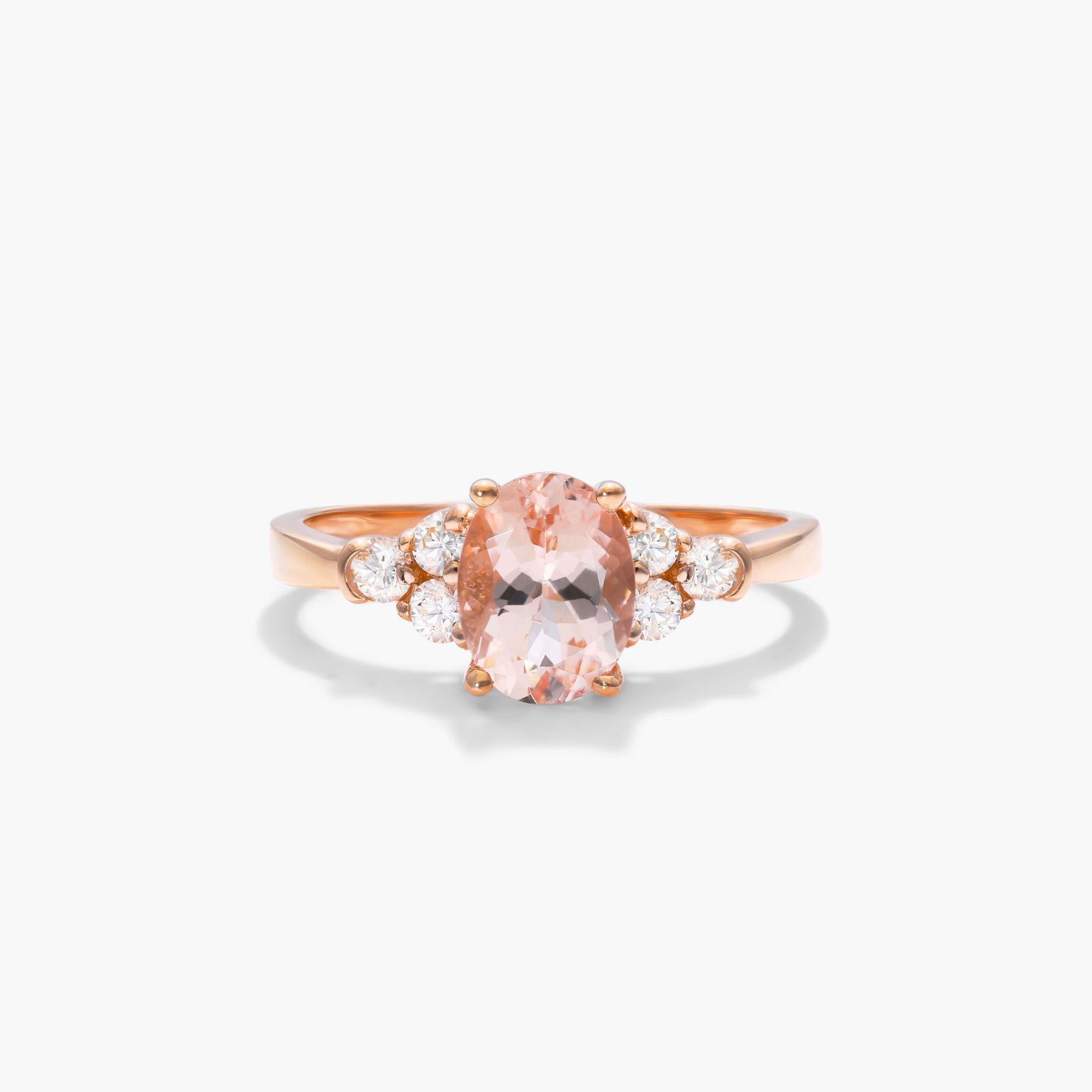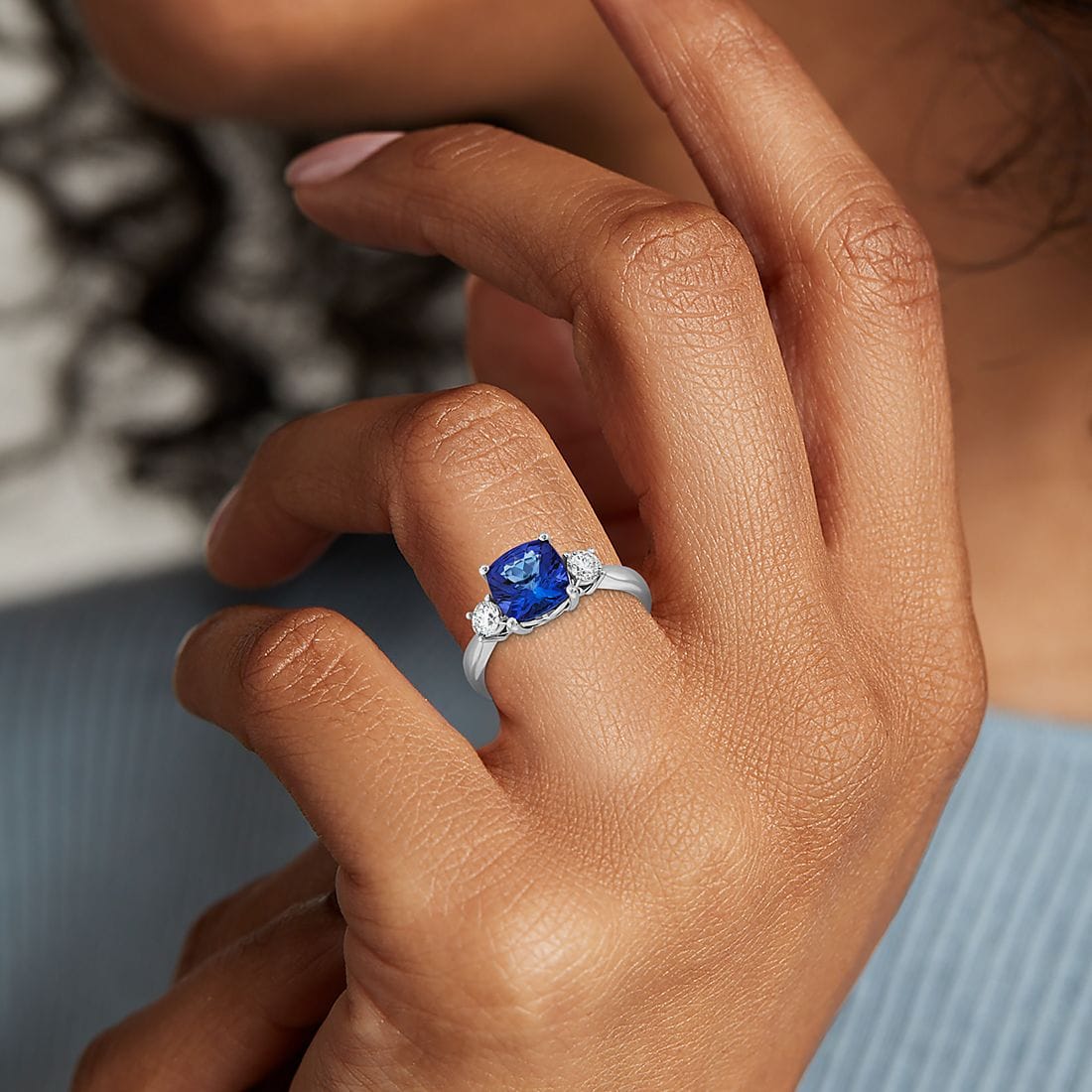
Table of Contents
An increasing number of modern couples are breaking away from the trend of purchasing diamond rings and are instead looking at other unconventional alternatives.
Considering that the tradition of using diamonds for engagement rings is a relatively new one (and partly because of a hugely successful marketing campaign by de Beers) it makes sense to explore other options too.
You may very well save money, be unique and stand out. If this sounds like you, then you’ve come to the right place! Here are 4 ways to choose a different ring
1. Diamond Look-Alikes

For those of you who want the diamond look but not the price or environmental concerns, choosing a diamond look-alike might be your best bet.
Moissanites and cubic zirconia are two of the most popular diamond simulants out there. Because these are lab-grown, you know that there are no ethical concerns connected to the stone, such as environmental devastation through mining, funding of wars and terrorism and worker exploitation.
Both moissanite and cubic zirconia feature a clear color and shine that will simulate the features of a diamond. In fact, it is very difficult to tell these apart from actual diamonds and most often, only a trained eye can distinguish these. For those of us with a thinner wallet, a moissanite or a cubic zirconia stone can be an excellent choice, because they come at a fraction of the price of a real diamond.
While both are pretty durable stones and are extremely hard (moissanite has a Mohs hardness ranking of 9.5 and cubic zirconia is 8.5 – 9), they can lose some of their luster over time and may need polishing.
2. Gemstones to Take Center Stage
Morganite – Delicate and elegant with soft pink shades.

Morganite is becoming increasingly popular as the center stone for engagement rings. It is a semi-precious stone which is typically pale pink or orange-pink in color.
Morganite has a high degree of brilliance and reflects light beautifully. Morganite pairs best with rose gold settings, which accentuate its pinkish hues, but if you like contrast, silver-colored metals really bring out the delicate shades of the stone.
Morganite has a good hardness rating (7.5 – 8 hardness ranking) and although over time may get cloudy, it is easy to clean, very durable and excellent for daily wear. Hence, a great choice for an engagement ring.
Tanzanite – A rare stone and becoming rarer.

Tanzanite, so called because it is only found in Tanzania, is a blue-violet stone that was only discovered in the 1960s. Tanzanite is even rarer than diamonds and is not a cheap stone, with a carat generally costing upwards of $2000.
Unfortunately, as the amount of tanzanite being mined depletes, it can only be assumed that the stone will get more expensive and rarer.
The stone has a brilliant sparkle but what is really eye-catching is its mesmerizing color. Dark blue tanzanites are highly coveted. As the center stone of an engagement ring, a tanzanite exudes class and elegance.
While as beautiful as a sapphire, the tanzanite is not as hard. It has a ranking of 6.5 to 7 and if worn daily, must be protected from hard knocks and rough wear. But if you are looking for something blue, you can’t go wrong with this rare magical stone.
Sapphires – A royal stone.

Sapphires are a famous choice for engagement rings and are linked to royalty (think Princess Diana’s engagement ring, now Kate Middleton’s) and celebrities.
They exude class and sophistication and are a perfect stone for a non-conventional couple.
The typical setting for blue sapphires is the white gold halo setting. There are hundreds of variations of this setting. If you prefer something minimalist, you can opt for a blue sapphire set amidst a thin halo of small white diamonds. If, however, you wish to make a statement with your ring, you can choose something more elaborate with more side stones and a flashier setting.
If blue is not your thing, you can find sapphires in an array of colors, including red, pink, green, and yellow. They are a very hard stone ranking just second to diamonds, at 9 on the Mohs scale, making them ideal for everyday wear. For the non-traditional couple, a sapphire engagement ring is eye-catching and full of class.
Rubies – The color of love.

Known for their deep blood-red color, rubies are a very popular choice for engagement rings. A very hard stone, with a rating of 9, a ruby will not easily lose its luster or get scratched and damaged.
Rubies go best with white gold, often surrounded by little diamonds to give it that extra sparkle. For a unique and vintage look, you can opt for rose gold which blends perfectly with the ruby. Who says red and pink don’t work well together?
A little ruby goes a long way, so you don’t necessarily need a large stone. Rubies are rarely found with inclusions, unlike sapphires, and are generally flawless. While rubies are rather pricey stones, it is well worth what you pay for them.
Emerald – A lush green stone

You can find emeralds in varied shades of green, from light to dark and even slightly bluish. In fact, the most highly coveted emeralds are bluish green to pure green stones. Emerald is the only gemstone that has a cut named after it, but you can find it in many other shapes and not just the emerald step-cut.
With a good hardness rating of 7.5, the emerald is a durable stone but you do need to take care of your stone. It is difficult to find a flawless emerald, and inclusions are often an accepted part of the stone. Emeralds, like sapphires, are generally set in white gold with white diamonds to accentuate its look. For a classic contrast, pair emerald with yellow gold.
Opal – Add a pop of color to your life.

If you are looking for a brightly colored-stone, you might enjoy an engagement ring featuring opal, an eye-catching, stone that has flashes of color. High quality opals can be somewhat pricey, but it is certainly more affordable than a diamond, and is very stunning for someone interested in a unique ring!
Opal has a vintage vibe and pairs nicely with white and yellow gold both. The drawback to an opal stone is that it is only a 5.5 to 6.5 on the Mohs Scale, which means you would have to take extra precautions to protect it from getting damaged. If you’re inclined towards an opal, check out our article on choosing an opal for your money’s worth.
3. Engagement Rings with No Gemstones
Forget-me-knot

If you are looking for a very different engagement ring, you may be interested in avoiding a gemstone altogether. For example, a simple knot ring is a traditional and also classy option for someone who enjoys the symbolism of a knot.
A Claddagh Ring

You may also be interested in purchasing a traditional Claddagh ring, originating from Ireland. This is an engagement ring that features two hands holding a heart, a common symbol of commitment and love.
4. A Wood Engagement Ring

Wooden engagement rings are gaining popularity for their simple charm and natural symbolism. A tree is symbolic of fortitude, loyalty, strength, and endurance. All these traits can be seen in the wooden ring. They are also eco-friendly and exude a natural beauty. Unlike metal rings, each wooden ring is unique. They can be inlaid with various designs and can even hold a gemstone if you really want one!
The downside, obviously, is that wooden engagement rings would require special care to keep them lasting for a long time. It is not advisable to have the ring in long contact with water (such as when swimming or washing dishes) or harsh chemicals and you would also need to have the ring re-varnished every so often to protect it.
Wrapping Up
Regardless of your wallet and interests, there is a wide-variety of gorgeous, affordable, non-diamond engagement rings for everyone.
Multiple options mentioned in this article show you a sampling of alternatives, but what’s most important is that you find the right fit for you. Keep looking until you find the perfect ring at an affordable price!









